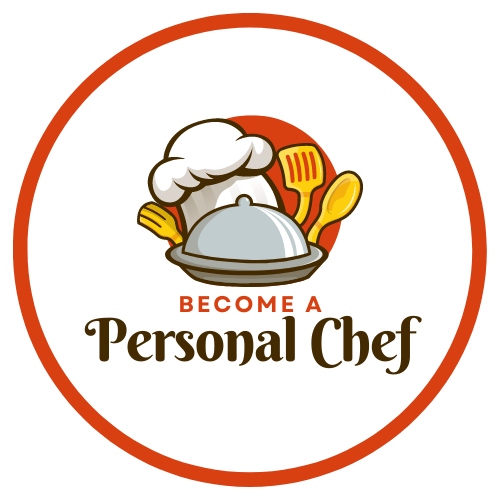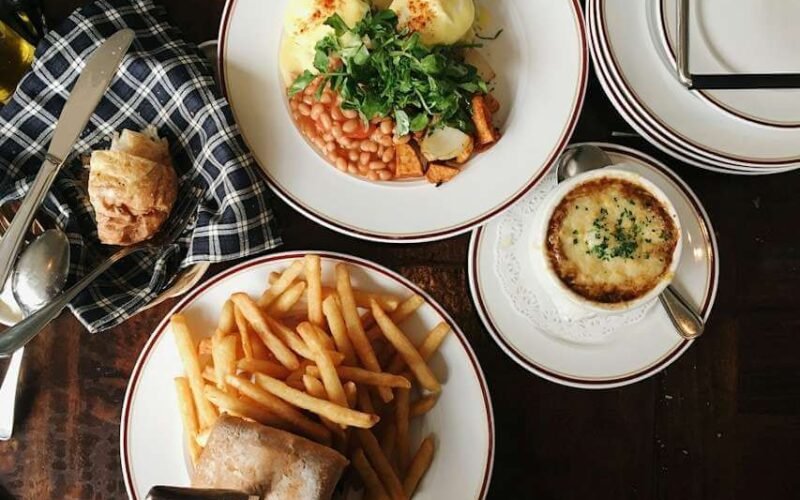Table of Contents
ToggleBelgian Food For Personal Chefs
Belgian cuisine is renowned for its rich, hearty dishes and broad range of flavors. As personal chefs, our culinary journey takes us to the heart of Belgium, where we’ll explore the key ingredients, cooking methods, and cultural significance of this delicious cuisine. From savory stews to delectable desserts, Belgian food offers something for every type of palate.
Belgium is a small country in Western Europe that borders France, Germany, and the Netherlands. Despite its size, it has a diverse culinary landscape due to its history as a trading hub and influences from neighboring countries. Belgian cuisine is often described as a fusion of French and German cooking techniques with some Dutch influence, resulting in unique dishes that are both hearty and refined.
One key ingredient in many Belgian dishes is beer. Belgium is known for producing some of the best beers in the world, ranging from light lagers to dark trappist ales. Beer is not only enjoyed as an accompaniment to meals but also used in cooking.
Aspiring personal chefs need to offer something different than traditional chefs who specialize in one or two kinds of cuisines. I’ve written an extensive article with links to many cuisines for your consideration – World Cuisine for Personal Chefs

Key Ingredients in Belgian Cuisine
Belgian cuisine is known for its use of quality local ingredients. Common elements include beef, dark beer, bread, onions, and a variety of herbs such as bay and thyme. Other ingredients can include carrots, mustard, juniper berries, brown sugar, and butter. The use of these ingredients creates rich and flavorful dishes that are beloved by locals and tourists alike.
Beef is a staple ingredient in Belgian cuisine, with popular dishes like carbonnade flamande (beef stewed in beer) and boulettes à la liégeoise (meatballs in a sweet onion sauce). Dark beer is also commonly used in cooking, adding depth and complexity to dishes. It can be found in everything from stews to sauces to marinades.
Bread is another important element in Belgian cuisine. From hearty loaves of rye bread to thin crispy gaufres (waffles), bread plays a significant role in many meals. Belgians take great pride in their local bakeries, which produce fresh bread daily using traditional methods and recipes.
Belgian cuisine also incorporates a variety of vegetables, depending on the season. Asparagus is a popular spring vegetable, often served steamed with a creamy sauce or in quiches and soups. In the summer, fresh tomatoes and cucumbers are used in salads and gazpachos. Fall brings hearty root vegetables like parsnips and turnips, which are often roasted or pureed into soups.
Seafood is another important aspect of Belgian cuisine, given its coastal location. Mussels are a beloved dish, usually cooked in white wine with herbs and served with fries on the side – a classic combination known as moules-frites. Herring is also commonly found on menus, prepared in various ways such as pickled or smoked.
For meat lovers, Belgian cuisine offers a variety of options including beef, pork, and game. The national dish is “waterzooi,” a hearty stew made with chicken or fish, vegetables, and cream. Another popular option is “stoofvlees,” a slow-cooked beef stew served with fries or mashed potatoes.
But perhaps the most well-known aspect of Belgian cuisine is its chocolate and beer. Belgium is famous for its high-quality chocolates, which are often handmade using traditional methods and recipes passed down through generations. And the country has over 1,500 different types of beer to choose from, ranging from fruity lambics to strong Trappist ales.
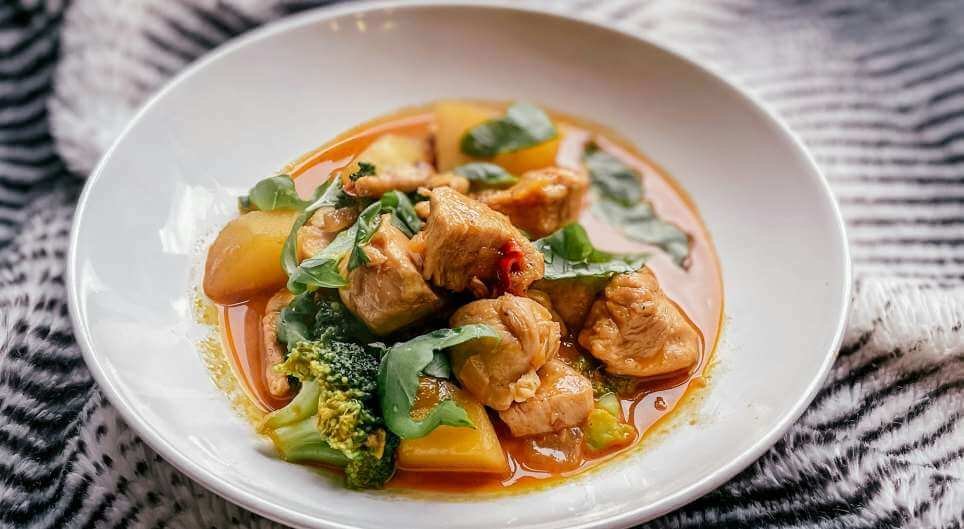
Sourcing Local Ingredients
While certain ingredients like Belgian dark beer might be harder to source locally, most are readily available at your local grocery store. For a truly authentic experience, you could look for Belgian imports at specialty stores or online. However, the heart of Belgian cuisine lies in its use of fresh, local ingredients.
Belgium is known for its agriculture and has a rich tradition of farming. The country’s fertile soil and temperate climate allow for a variety of fruits, vegetables, meats, and dairy products to thrive. As a result, Belgian chefs pride themselves on utilizing locally sourced ingredients in their dishes.
One key aspect of sourcing local ingredients is the emphasis on seasonality. In Belgium, it is common for restaurants to change their menus according to what produce is available during each season. This not only ensures the freshest flavors but also supports local farmers and reduces carbon emissions from transportation.
Traditional Cooking Methods
Belgian cuisine often involves slow cooking methods to develop deep, rich flavors. Dishes like Carbonnade Flamande, a traditional Belgian stew, are typically simmered for hours until the meat is tender and the flavors are well combined. Other popular slow-cooked dishes include Stoofvlees, a beef stew with a beer-based sauce, and Waterzooi, a creamy fish and vegetable soup.
Aside from stews and soups, there are also various traditional methods of roasting and braising meats in Belgian cuisine. Roasting is typically done with whole cuts of meat such as chicken or pork, while braising involves cooking smaller pieces of meat in liquid until they are tender. Both methods result in juicy and flavorful meats that are commonly served with sauces made from the pan drippings.

Dominant Flavors and Spice Adjustments
The dominant flavors in Belgian cuisine are hearty and savory, often featuring a depth of flavor from ingredients like dark beer and mustard. While not typically spicy, the level of herbs and spices can be adjusted to suit your client’s preferences. Here are some tips for adjusting the spice levels in Belgian dishes:
1. Be mindful of the herbs and spices used in traditional Belgian dishes. Common herbs and spices include thyme, bay leaf, parsley, nutmeg, and paprika. Take note of which ones are used in a particular dish and adjust accordingly.
2. Consider using less or omitting certain herbs and spices if your client prefers milder flavors. For example, if they do not enjoy the taste of nutmeg, you can leave it out or use a smaller amount to still add depth without overwhelming their palate.
3. On the other hand, if your client enjoys spicy food, feel free to increase the amount of certain herbs and spices such as black pepper or cayenne pepper. Just be sure to taste as you go and find a balance that your client enjoys.
4. Don’t be afraid to experiment with other herbs and spices not traditionally used in Belgian cuisine. For example, adding a little bit of cinnamon can add a warm and unique flavor to classic dishes like stoofvlees (Belgian beef stew).
5. Keep in mind the heat level of different types of peppers if using them in your dish. Some peppers, such as jalapenos or serranos, tend to be hotter than others. Use sparingly and adjust based on your client’s preference for spice.
6. If you are making a sauce or marinade for the dish, start by only adding half of the recommended amount of herbs and spices. You can always add more later, but you can’t take them out once they’ve been added.
7. Don’t forget about the importance of salt in your dishes. It helps to enhance the flavors of other ingredients and brings everything together. However, be cautious not to oversalt, as it can easily overpower the dish.
8. For a healthier option, try using fresh herbs and spices instead of dried ones. Not only do they have a more vibrant flavor, but they also contain more nutrients.
9. When cooking with garlic or onions, don’t skimp on the amount called for in the recipe. These ingredients are essential for building flavor in Belgian cuisine.
10. Lastly, always keep an open mind when experimenting with new herbs and spices. You never know what unique and delicious flavor combinations you may come up with!

Cultural Significance of Belgian Cuisine
Belgium’s culinary tradition reflects its history as a cultural crossroads in Europe. The country’s cuisine combines French sophistication with German portion sizes, resulting in a unique blend of flavors and dishes. Belgian cuisine is known for its hearty and comforting dishes, as well as its extensive use of fresh, local ingredients.
One of the most iconic aspects of Belgian cuisine is its love for beer. Belgium produces over 1,500 different types of beers, ranging from light and refreshing to dark and complex. This love for beer dates back to the Middle Ages when monks brewed their own beer in abbeys across the country. Today, many traditional Belgian dishes are still paired with a specific type of beer, making it an integral part of their dining culture.
Dietary Considerations and Health Aspects
While Belgian cuisine can be rich and hearty, it also includes healthier options like Moules-frites (mussels and fries), which features steamed mussels in a light sauce. As always, consider your client’s dietary restrictions or allergies when preparing these dishes. Are they gluten-intolerant? Substitute the traditional flour in the sauce for a gluten-free alternative. Do they have a dairy allergy? Use a non-dairy cream or coconut milk instead of heavy cream.
Another aspect to consider when cooking Belgian cuisine is its connection to health and well-being. Many Belgians pride themselves on their healthy lifestyle, which includes regular exercise and indulging in moderation. As such, many dishes incorporate fresh vegetables, lean proteins, and whole grains. For example, Waterzooi is a popular dish that features chicken or fish cooked in broth with an abundance of vegetables like carrots, leeks, and celery.
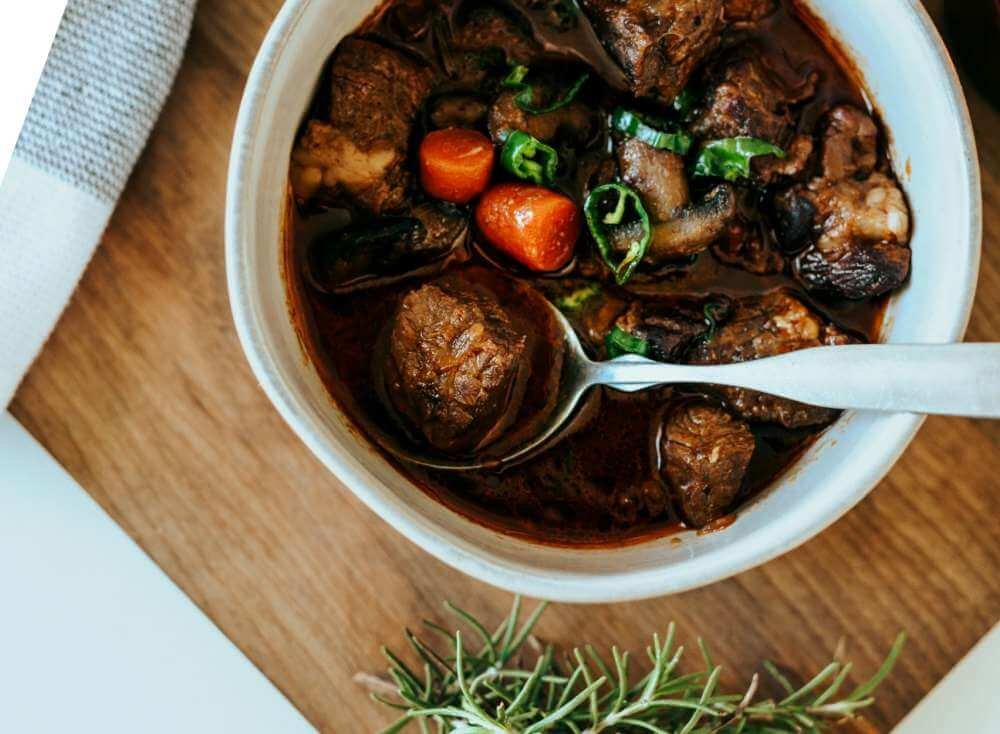
Traditional Accompaniments
Belgian cuisine is often paired with locally brewed beers. Side dishes might include traditional Belgian fries, while desserts could feature Belgian waffles or chocolates.
Other popular accompaniments in Belgian cuisine include mustard, mayonnaise, and pickles. These condiments can add a tangy or creamy element to any dish. Additionally, stews and braised dishes are typically served with a hearty helping of bread to soak up the rich sauces.
Presentation and Serving
Presentation in Belgian cuisine is straightforward and rustic, reflecting the hearty nature of the dishes. Meals are typically served family-style, with everyone sharing from common dishes. The food is often served on large platters or in communal bowls, encouraging a convivial atmosphere at the dining table.
In addition to the communal aspect of serving, there is also great attention paid to presentation. Belgian chefs take pride in creating visually appealing dishes that are as beautiful as they are delicious. This attention to detail can be seen in the careful arrangement of ingredients and the use of colorful garnishes.
One popular technique used for presentation in Belgian cuisine is known as “trompe l’oeil,” which translates to “fool the eye.” This involves creating dishes that resemble other items, such as a dessert that looks like a flower pot or a savory dish that resembles a piece of fruit. This playful approach adds an element of surprise and delight to the dining experience.
But Belgian cuisine is not just about visual appeal, it also aims to please the taste buds. From hearty stews and savory pies to delicate seafood dishes and rich chocolate desserts, there is something for every palate. And with a strong emphasis on using fresh, local ingredients, you can be sure that your meal will be bursting with flavor.
But perhaps the most unique aspect of Belgian cuisine is its convivial atmosphere at the dining table. Meals are often enjoyed in a relaxed and leisurely manner, with friends and family gathered around to share good food and conversation. This focus on enjoying each other’s company adds a special touch to the dining experience that cannot be found elsewhere.

Here’s a list of some essential tools, utensils, pots and pans often used when preparing Belgian foods:
Chef’s Knife: A versatile tool used for chopping, slicing, and dicing ingredients.
Cutting Board: A sturdy surface where ingredients are cut. It helps protect countertops and makes clean-up easier.
Frying Pan/Skillet: Used for frying and sautéing. Essential for dishes like Carbonnade Flamande (Flemish stew).
Dutch Oven: A heavy cooking pot with a tightly fitting lid. Ideal for slow-cooking stews like Waterzooi (chicken or fish stew).
Saucepan: Necessary for making sauces or boiling smaller amounts of food. Useful for creating gravy for dishes or simmering vegetables.
Waffle Iron: Essential for making traditional Belgian waffles, which are thicker and have larger squares than other types.
Baking Dish: Essential for baking traditional dishes like Tarte au sucre (sugar pie).
Mixing Bowls: Essential for combining ingredients. Used in almost every recipe.
Wooden Spoon: A must-have for stirring. It’s gentle on your pots and pans and doesn’t conduct heat.
Measuring Cups and Spoons: Necessary for accurate measurements of ingredients.
Tongs: Especially useful when grilling or frying, to turn and serve meat without piercing it.
Peeler: Used for peeling vegetables like potatoes or apples.
Whisk: Useful for mixing, beating, and whipping ingredients.
Grater: Used for grating cheese for dishes or zesting lemons for desserts.
Pastry Brush: Essential for applying egg wash or glaze to pastries.
Deep Fryer: Essential for making traditional Belgian fries, which are typically double-fried.
Remember, the tools you’ll need can vary depending on the specific Belgian dishes you plan to prepare.
Wondering what tools a personal chef might need? I’ve written an extensive article for you – A Comprehensive List Of Must-Have Tools and Essential Items for the Personal Chef
Variations and Preparation
Belgian cuisine varies by region, with coastal areas featuring more seafood and inland regions focusing on meat and poultry. As a personal chef, you can experiment with these regional variations to create unique dishes for your clients.
Here are some key ingredients and cooking techniques commonly used in Belgian cuisine:
1. Belgian Waffles: These famous waffles are made with a yeast-based batter, giving them a light and airy texture. They are typically served for breakfast or as a dessert topped with fruit, whipped cream, or chocolate sauce.
2. Stoemp: This hearty dish is a staple in Belgian cuisine and consists of mashed potatoes mixed with other vegetables such as carrots, cabbage, or onions. It is often served alongside sausages or stewed meat.
3. Carbonnade Flamande: This traditional Flemish beef stew is cooked in beer instead of wine, giving it a rich and slightly sweet flavor. The beef is slow-cooked with onions and spices until tender, creating a delicious and comforting dish.
4. Moules-Frites: Mussels and french fries are another classic Belgian dish, often served as street food or in upscale restaurants. The mussels are typically steamed in white wine or beer, then served with a side of crispy fries.
5. Waterzooi: This creamy fish stew hails from the city of Ghent and is made with a variety of seafood such as cod, salmon, shrimp, and mussels. The broth is thickened with cream and eggs, giving it a velvety texture.
6. Speculoos: These spiced cookies are a beloved treat in Belgium, especially around the holiday season. They are made with cinnamon, nutmeg, ginger, and other warm spices, and are often enjoyed with a cup of coffee or tea.
7. Chicons au gratin: Also known as Belgian endive gratin, this dish features the bitter leafy vegetable baked in a creamy cheese sauce and topped with breadcrumbs. It’s a hearty and indulgent side dish that pairs well with roasted meats.
9. Chocolate: Belgium is famous for its chocolate, and it’s no surprise why – the country produces some of the finest chocolate in the world. From pralines to truffles to chocolate bars, there is no shortage of options to satisfy your sweet tooth.
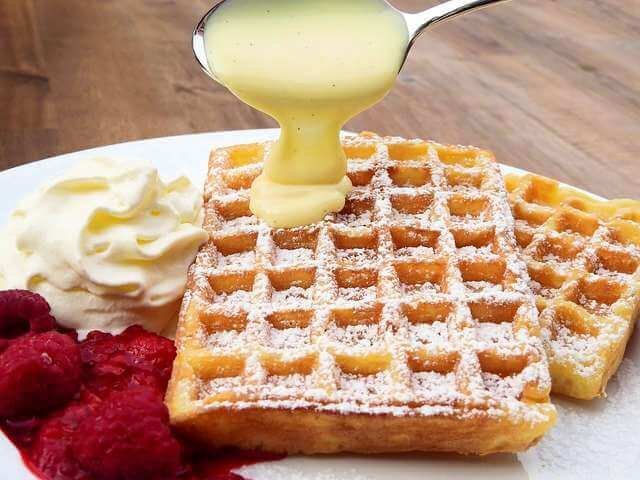
Belgian Food For Personal Chefs
Incorporating your client’s preferences into this cuisine while maintaining its authenticity can be a fun challenge. Whether it’s adjusting spice levels, choosing locally sourced ingredients, or presenting the meal in an appealing way, there’s plenty of room for creativity in Belgian cuisine.
So, let’s dive into the world of Belgian food and explore some delicious dishes for personal chefs to add to their menu.
Here are some of my favorite tools for providing my personal chef service
As an experienced personal chef, I’ve found that the secret to creating mouthwatering dishes goes beyond just having a passion for food. It’s also about using the right kitchen tools. Today, I’m going to share with you my must-have kitchen items that help me bring my culinary creations to life.
1. Chef’s Knife
The first item on my list is a high-quality chef’s knife. It’s the most versatile tool in my kitchen, perfect for chopping, slicing, and dicing. My preference is for a Global Chef’s Knife, known for the edge and the way they are balanced.
2. Cast Iron Skillet
Next up is a good old cast-iron skillet. From searing steaks to baking cornbread, this pan does it all. I love the Lodge Cast Iron Skillet, which retains heat beautifully and adds a nice crust to anything you cook.
3. Stainless Steel Pots and Pans
A set of stainless steel pots and pans is essential for a variety of cooking techniques. They’re great for simmering, boiling, and sautéing. All-Clad’s Stainless Steel Cookware Set is my go-to choice for its exceptional performance and durability.
4. Immersion Blender
An immersion blender makes pureeing soups, making smoothies, and blending sauces a breeze. I suggest the Braun Multiquick Hand Blender, which is powerful, easy-to-clean, and highly versatile.
5. Digital Thermometer
To ensure perfectly cooked meats every time, a digital thermometer is a must. The ThermoPro TP19 Waterproof Digital Meat Thermometer provides speedy and accurate readings, ensuring your roast chicken or prime rib is cooked to perfection.
6. Silicone Spatula
A silicone spatula is a chef’s best friend for its versatility. It’s heat-resistant, non-stick, and perfect for everything from folding batter to stirring sauces. I recommend the OXO Good Grips Silicone Spatula.
7. Stand Mixer
Lastly, for avid bakers, a stand mixer is a game-changer. The KitchenAid Artisan Series 5-Qt. Stand Mixer isn’t just a pretty face; it makes mixing doughs and batters effortless.
These are the tools that I use daily in my personal chef service. Remember, quality tools make a difference, but they don’t have to break the bank. Start with the basics and add on as you grow more comfortable and adventurous in the kitchen.
Happy cooking!
